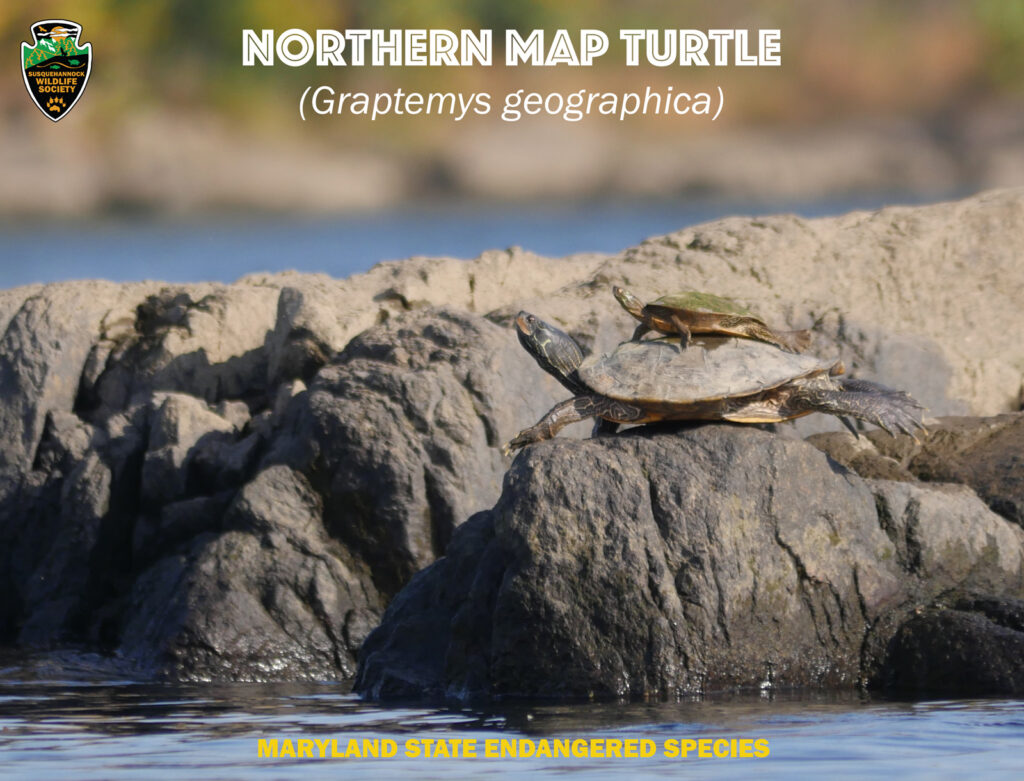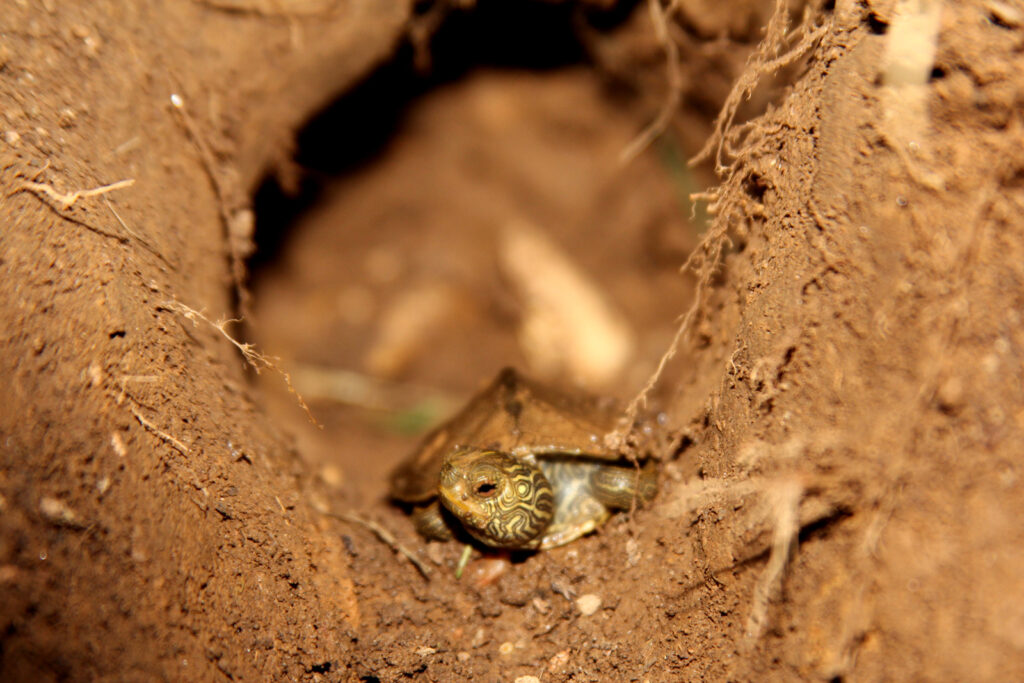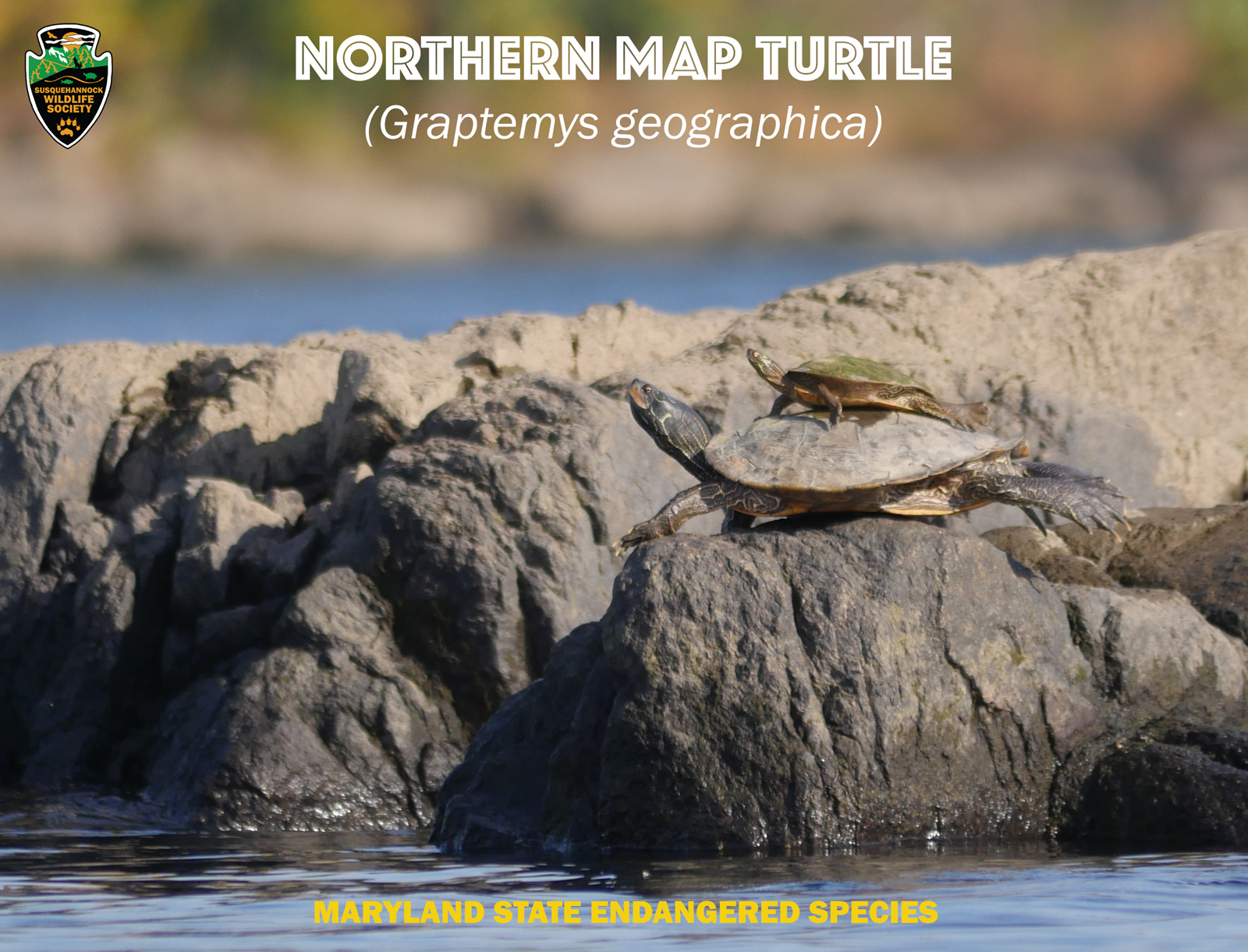
Today is Endangered Species Day! While there are unfortunately many species who are candidates for protection we could talk about as well as some great success stories like the bald eagle, we are going to focus on a species that might be common throughout much of its range but is endangered here in Maryland, making it locally significant to our heritage and ecosystem. The Northern Map Turtle is an iconic species for those who have paddled out or gone by boat across the often swift moving waters of the mighty Susquehanna River, with it and its immediate tributaries being the only region of our state where it can found. While in its preferred habitat it can be one of the most prevalent turtle species seen on any outing.
So why is it endangered? Thanks to over a decade of research by Towson University in partnership with the Maryland Department of Natural Resources and Exelon, we have learned a lot. This river turtle relies heavily on the exposed rock islands to bask (which is necessary to increase body temperatures for egg production and food digestion) and these islands are often submerged not only during floods but as the water levels are artificially manipulated to generate power at the Conowingo Dam. It has a specialized diet of snails, muscles and clams (many of which are now invasive species but are still eaten by map turtles), with the much larger females specializing on one type while the smaller males and juveniles focusing on others. They require dry and sunny places to nest that are often perfect for establishing invasive plants, not to mention being well known by mammalian predators such as raccoons and foxes who love to eat turtle eggs. Without successful nesting , this species will cease to have a future in our state and with the physical barrier of multiple dams along the river from Conowingo into Pennsylvania, our populations are geographically isolated.
With all of these threats stacked against this species, is there still hope? Luckily successful, largely predator free nesting has occurred in the Town of Port Deposit where the turtle has become a mascot, receiving its own nesting beach and research hub at the newly restored Tomes Gas House and is looked after by residents to make sure nests, when found, can be monitored. One way of protecting nests is for researchers to cage them until eggs are ready to hatch so that hatchlings can be released into their aquatic habitat before land predators can get to them. While populations above and below the dam are separated, each has been studied to determine where they hibernate, where their prime nesting areas are located, what natural structures they use to bask, where young tend be found, and what movements the turtles make throughout their active season, among other things. There have even been experiments using artificial basking platforms that rise and fall with the river flow to see how it might benefit the turtles in this altered river system.
As with any endangered species, the goal is always to restore them to a sustainable population and eliminate as many threats as possible. That work must be informed by rigorous scientific research and we are proud to see some incredible effort be invested to learn more about and hopefully one day save this species that is such an important member of our Susquehanna ecosystem. Please continue to support those who conduct research and help protect our most sensitive species, there is much work yet to do.



